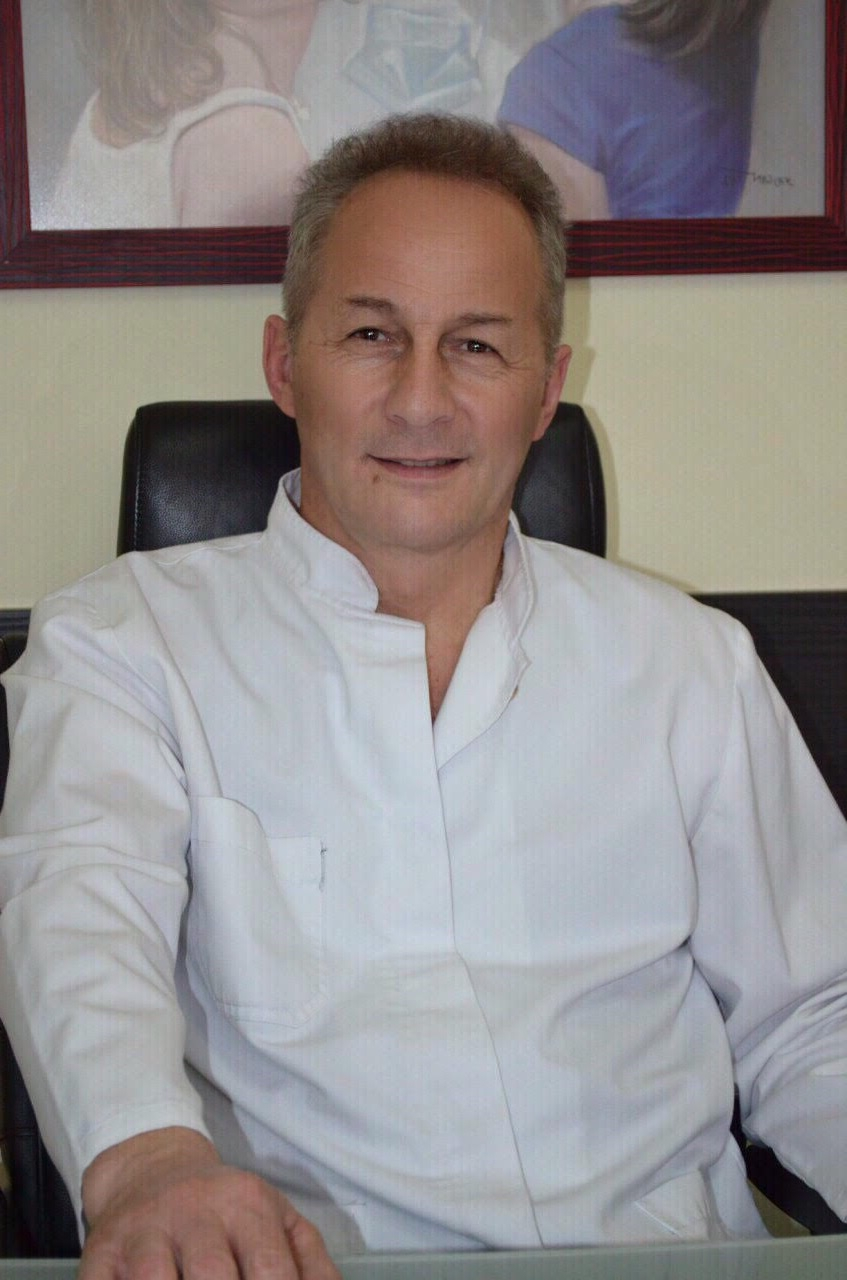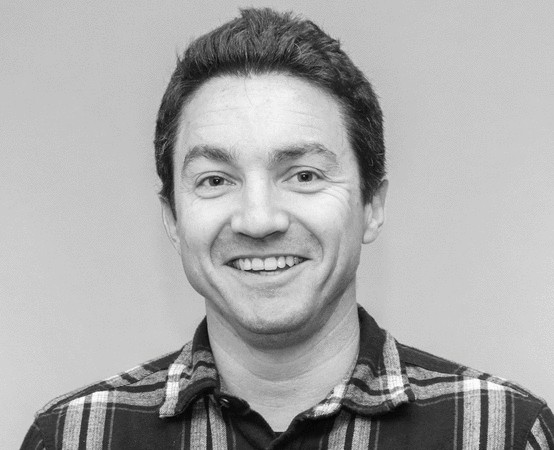Nova BioLabs: Spotlight RT personalized cancer test
by Mike Banos
Nova is developing a truly personalized cancer recurrence test that allows us to focus surveillance on an individual’s tumor abnormalities, instead of the “catch all” methods currently in use.
Longmont, CO United States Diagnostics Equity Raise AMIA challenge AMIA challenge
About our project

The problem we solve: There are currently over 16 million cancer survivors in the US alone, with studies indicating that roughly 60% of them experience anxiety over the disease returning. Current methods for long-term monitoring of a patient’s health post-treatment are often reactive and, in some cases, rudimentary (e.g. searching for a lump during a self-exam). The unfortunate reality of these methods for tracking health status is that by the time the patient realizes their tumor has returned, the disease has progressed to an advanced state. Although more advanced techniques that would enable those in remission to proactively search for signs of their tumor returning are commonplace in the cancer research community, they have yet to be made available to those who would most benefit from them.
About our solution: Research has shown that as tumor cells amass there will be corresponding levels of abnormal DNA in the bloodstream. These abnormalities can be detected, but require large amounts of data to be generated in order to have a reasonable chance of identifying them since they comprise only a small fraction of all DNA. Further compounding the issue, current tests available target a stock set of genes, most of which will not be relevant to any individual patient's tumor. The consequences of this are that in order for these tests to be effective an inflated amount of data must be generated at an extremely high cost, the majority of which will simply be ignored. Conversely, the Spotlight RT test was designed to focus its data collection to strictly the genes containing abnormalities in an individual's initial tumor biopsy, resulting in an economical solution to identifying signs of tumor returning at an extremely early stage, all simply by providing blood.
Progress to date:
Using our team's extensive knowledge in designing tools for molecular research, we currently have our test designed and ready to order reagents. We are currently working through the details with a local hospital system to formalize an agreement which would provide us access to patients and promote our test amongst their patients. We have spoken with a handful of individuals in the cancer community (both patients and advocates) and have received very encouraging responses that the community as a whole would be enthusiastic about having a tool such as this at their disposal. Similarly we have had generally positive feedback from the members of the oncology community that we have reached out to (the main concern being "What if you can identify signs of tumor before it can be found on a CT scan?"). Finally, the investment community has been very receptive to backing something like this, but requiring proof-of-concept data before making the commitment.
About Our Team

Creator: Mike Banos
Location: Colorado
Bio: Mike Banos is a seasoned bioinformatician with almost a decade in the biotech industry supporting product development by guiding experimental design, providing statistical analysis of data, and developing novel algorithms tailored to internal processes and proprietary chemistry. Most recently Mike was the technical lead on the commercial NGS analytics platform at ArcherDX, leveraging both his informatics and software engineering acumen. Mike recieved his MS in Bioinformatics from Boston University and his BS in Computer Science from Millersville University.
Title: Director of Informatics
Advanced Degree(s): MS in Bioinformatics
About Team Members
Brady Culver
Director of R&D, PhD in Molecular Biology
Biography: Brady Culver is an expert molecular biologist and accomplished product development scientist. Prior to co-founding Nova Biosciences, he was Director of NGS chemistry at ArcherDx, a molecular diagnostics startup, where he led the development of the FusionPlex, VariantPlex, and Reveal ctDNA product lines. Before Archer, Brady was an R&D scientist for Dharmacon, where he invented the method of producing siRNAs enzymatically used by the company today. Over the course of his academic and business career, he has been the lead author on several journal articles, book chapters, and patent applications. Brady earned his PhD in Molecular Biology from the University of Colorado, Boulder and his BS in Physiology from the University of California, San Diego
Title: Director of R&D
Advanced Degree(s): PhD in Molecular Biology
Brent Lutz
CEO, MS in Engineering
Biography: Brent Lutz has extensive experience developing biomedical and biotech products from early conception to commercialization. He began his career as an engineer, developing micro-scale systems and automation tools for a variety of diagnostic and industrial safety applications. His last 7 years were spent at startups, overseeing not only product development, but also marketing activities in synthetic biology and NGS-based diagnostics. Brent spent the past two years at ArcherDX as product manager of its software products, focusing on commercialization of its NGS bioinformatics and reporting platforms.
Title: CEO
Advanced Degree(s): MS in Engineering
Jason Amsbaugh
Director of Marketing, MBA
Biography: Jason Amsbaugh is a sales and marketing executive who specializes in developing and executing successful commercial strategies. Jason brings over a decade of sales and marketing experience in diagnostics and life science companies, and has held numerous commercial roles at companies ranging in size from startups to Fortune 100 companies. Most recently, Jason was Director of Global Marketing at ArcherDX, where he oversaw the go-to-market and product development strategy as well as all aspects of marketing and product management. Jason holds an MBA from the University of Colorado and a BS in Biochemistry from Colorado State University.
Title: Director of Marketing
Advanced Degree(s): MBA
About Our Company

Nova BioLabs
Location: 626 Gay St
Longmont, CO 80501
Founded: 2017
Website: http://www.novabiolabs.com/
Product Stage: Idea
YTD Sales: Working on it
Employees: 3-5
How We Help Patients
Using state-of-the-art laboratory techniques, our test is designed so that it can be individualized for the patient, instead of using a “one size fits all” approach. By having a test fit to the patient, we greatly increase the likelihood of identifying signs of tumor reforming at the earliest stage possible, while providing an economical offering. Additionally, the ability to simply have blood drawn and then have it shipped for testing offers a convenience that can accommodate anyone’s busy schedule, as well as giving the opportunity for high-quality care without the need to live near a major cancer center. Finally, the patient value of our test extends beyond the improved outcomes associated with early detection of cancer, as negative results can provide much needed peace of mind to treatment weary and anxious survivors.
How We Help Physicians
In the same way that earlier detection of cancer recurrence benefits patients, it benefits providers as well. Physicians and other caregivers can expect better outcomes for their patients if disease recurrence is caught earlier [1]. Additionally, anecdotal reports and a recent study [2] have argued that as time progresses from declaration of remission cancer survivors tend to become less attentive to their follow-up care. Giving survivors the opportunity to monitor their bodies for signs of recurrence with a personalized blood test may help keep them engaged and vigilant on their health. Finally, for those patients that received a targeted therapy to treat their disease, our test can not only monitor their blood for signs of recurrence but also simultaneously test for the appearance of mutations that confer resistance to targeted therapies. This provides critical, "real time" information to the physician that the current treatment regiment has been rendered ineffective and therefore should be altered to include the next-line drug if available. Initially, we imagine that our test serves to recommend that patients receive follow up testing using methods approved by the FDA for specific diagnostic purposes. Eventually, however we aim to make out test sufficient for detection of recurrence but also diagnosis of drug resistance mechanisms.
1. SEER*Explorer: An interactive website for SEER cancer statistics [Internet]. Surveillance Research Program, National Cancer Institute. [Cited 2017 Apr 14]. Available from https://seer.cancer.gov/explorer/
2. J Clin Oncol 36, 2018 (suppl 7S; abstr 29)
How We Help Hospitals
As with patients and providers, earlier detection of cancer recurrence benefits hospitals and other institutions by leading to better outcomes. Every hospital wants to have a winning record against cancer and with more cases caught early, we put institutions in a position to beat the disease on behalf of their patients more frequently. At this point the science is still developing for using a blood-based test to identify the location of disease recurrence, therefore a positive result from our test will likely lead to a high resolution scan, i.e. PET or contrast enhanced CT scans, to identify the location of the tumor recurrence. For those hospitals with such advanced imaging capabilities, a positive test result would in effect send business their way. Our test is intended to supplement existing cancer care follow-up practices and procedures, not take business away from the hospital. We hope that our test helps to keep patients engaged with their health and so it may in fact also benefit hospitals and health clinics through greater patient engagement and consumption of the services those institutions provide.
How We Help Partners
The initial sector that is likely to benefit from having our test in place is the insurance industry. Due to the established benefits of beginning cancer treatment as early as possible, health insurance companies would likely realize lower long-term treatment costs for cancer survivors.
Challenge Mission
Affiliation(s)
We are currently in discussions with the University of Colorado Medical Center to form a collaboration which would give us access to patients. We have also identified a Chief Medical Officer who is faculty at the Medical College of Wisocnsin.Key Milestones Achieved and Planned
Over the last 6 months, we have been able to hit several important goals despite lacking sufficient funding to begin executing our research plan. First, we filed a provisional patent for our chemistry, which the final patent application expected to be submitted in mid-October. Second, we have a fully designed assay, so we are ready to order reagents as soon as possible once we have secured the necessary capital. Third, we have the majority of our analytics platform in place, contingent on having experimental data to validate algorithms and processes. Fourth, we are negotiating partnerships that would give us access to patients and give us a Chief Medical Officer, both of which are vital to receiving the regulatory approvals we are seeking. Once we have secured funding, we anticipate a 6 month R&D cycle to develop the chemistry, at which point we can start marketing it as a Research Use Only tool while we pursue our regulatory approvals.Our Competitive Advantages
First, we believe our chemistry will prove to be the most economical solution to providing personalized panels, giving us a cost advantage over any other potential competitor. Current ctDNA panels (stock offerings) cost thousands of dollars to run, where we will be able to provide the same result for less than $1,000. Second, we are optimistic that we can obtain FDA approval for our assay allowing us to market directly to consumers, while current approaches to assay personalization are unlikely to meet this goal.Barriers to Entry
We have a patent filed for our chemistry, which we believe is the optimal approach to achieving personalized assays. There are other approaches to reaching the same end, but they present logistical challenges that make them difficult to maintain a scalable product.Funding, Partners and Alliances To Date
To date, funding has been provided solely by the founders. We are currently seeking a true seed round of ideally $500K to develop the chemistry, with a minimum of $100K which will be sufficient to secure our IP. We very likely have a co-investor identified who has stated on several occassions they are willing to provide start up funding with a lead investor who has experience in biotech.Innovation Details
Intellectual Property Summary
We have a provisional patent filed and are currently working with a patent lawyer to file a revised version of it for both the chemistry and the supporting software systems.
Clinical Information
Cancers discovered at earlier stages have a significantly (2 to 5 times) higher 5 year survival rate than later stages [1], so it comes as no surprise that early detection of recurrence is also associated with better outcomes [2-7]. Current recurrence surveillance guidelines are frequently limited to looking for signs of localized recurrence via a physical exam or in some instances with focused radiological methods, e.g. mammogram or CT scan [3,8-11]. Because focused scans fail to look for signs of recurrence at distal sites, they fail to fully protect patients in this regard. However, we are now at a turning point in the management of cancer, as we are approaching a critical mass of enthusiasm, technology, and data all supporting the application of cell-free DNA (cfDNA) analysis for the prediction, diagnosis, and surveillance of this terrible disease. Cancer leaves traces of itself in the bloodstream, and we can detect these traces in one form via the presence of circulating tumor DNA (ctDNA) [12-15]. ctDNA detection via a blood draw is advantageous over existing methods of recurrence testing in that 1) it is capable of detecting localized or distal recurrence 2) it offers incredible specificity and sensitivity and 3) it is convenient for the patient - blood draws can be taken at home, work, or in the clinic. The application of ctDNA detection for cancer recurrence monitoring is beyond theoretical now, as the results from one clinical trial have shown that ctDNA detection from a blood draw preceded identification of recurrence by CT scan by up to a year [16].
As described below in the "FDA Status" section, we anticipate, but it has yet to be confirmed, that we will require FDA approval to fully commercialize our test. We are currently in the process of formalizing an agreement with a local hospital system to gain access to patients required for any studies the FDA will require, as well as to gain credibility in the oncology community as a whole. Having additional access to patients via “crowdsourcing” would obviously be advantageous, however we do anticipate time-sensitive collection of samples (i.e. post-diagnosis and pre-treatment). Additionally, identifying participants for longitudinal studies would be welcome.
-
SEER*Explorer: An interactive website for SEER cancer statistics [Internet]. Surveillance Research Program, National Cancer Institute. [Cited 2017 Apr 14]. Available from https://seer.cancer.gov/explorer/.
-
Lu, W.L., Jansen, L., Post, W.J., Bonnema, J., Velde, J.C.V.D., Bock, G.H.D., 2008. Impact on survival of early detection of isolated breast recurrences after the primary treatment for breast cancer: a meta-analysis. Breast Cancer Research and Treatment 114, 403–412. doi:10.1007/s10549-008-0023-4
-
Young, P.E., Womeldorph, C.M., Johnson, E.K., Maykel, J.A., Brucher, B., Stojadinovic, A., Avital, I., Nissan, A., Steele, S.R., 2014. Early Detection of Colorectal Cancer Recurrence in Patients Undergoing Surgery with Curative Intent: Current Status and Challenges. Journal of Cancer 5, 262–271. doi:10.7150/jca.7988
-
Creutzberg, C.L., Putten, W.L.V., Koper, P.C., Lybeert, M.L., Jobsen, J.J., Wárlám-Rodenhuis, C.C., Winter, K.A.D., Lutgens, L.C., Bergh, A.C.V.D., Steen-Banasik, E.V.D., Beerman, H., Lent, M.V., 2003. Survival after relapse in patients with endometrial cancer: results from a randomized trial?. Gynecologic Oncology 89, 201–209. doi:10.1016/s0090-8258(03)00126-4
-
Hung JJ, Hsu WH, Hsieh CC, Huang BS, Huang MH, Liu JS, et al. Post-recurrence survival in completely resected stage I non-small cell lung cancer with local recurrence, Thorax , 2009, vol. 64 (pg. 192-6)
-
Hung JJ, Jeng WJ, Hsu WH, Wu KJ, Chou TY, Hsieh CC, et al. Prognostic factors of postrecurrence survival in completely resected stage I non-small cell lung cancer with distant metastasis, Thorax , 2010, vol. 65 (pg. 241-5)
-
Cormier, J., Voss, R., Woods, T., Cromwell, K., Nelson, K., 2015. Improving outcomes in patients with melanoma: strategies to ensure an early diagnosis. Patient Related Outcome Measures 229. doi:10.2147/prom.s69351
-
Schneble, E.J., Graham, L.J., Shupe, M.P., Flynt, F.L., Banks, K.P., Kirkpatrick, A.D., Nissan, A., Henry, L., Stojadinovic, A., Shumway, N.M., Avital, I., Peoples, G.E., Setlik, R.F., 2014. Current Approaches and Challenges in Early Detection of Breast Cancer Recurrence. Journal of Cancer 5, 281–290. doi:10.7150/jca.8016
-
Colombo, N., Preti, E., Landoni, F., Carinelli, S., Colombo, A., Marini, C., Sessa, C., 2013. Endometrial cancer: ESMO Clinical Practice Guidelines for diagnosis, treatment and follow-up. Annals of Oncology 24, vi33–vi38. doi:10.1093/annonc/mdt353
-
Colt, H.G., Murgu, S.D., Korst, R.J., Slatore, C.G., Unger, M., Quadrelli, S., 2013. Follow-up and Surveillance of the Patient With Lung Cancer After Curative-Intent Therapy. Chest 143. doi:10.1378/chest.12-2365
-
Trotter, S.C., Sroa, N., Winkelmann, R.R. et al, A global review of melanoma follow-up guidelines. J Clin Aesthet Dermatol. 2013;6:18–26.
-
Alix-Panabieres, C., Pantel, K., 2016. Clinical Applications of Circulating Tumor Cells and Circulating Tumor DNA as Liquid Biopsy. Cancer Discovery 6, 479–491. doi:10.1158/2159-8290.cd-15-1483
-
Strickler, J.H., Loree, J.M., Ahronian, L.G., Parikh, A.R., Niedzwiecki, D., Pereira, A.A.L., Mckinney, M., Korn, W.M., Atreya, C.E., Banks, K.C., Nagy, R.J., Meric-Bernstam, F., Lanman, R.B., Talasaz, A., Tsigelny, I.F., Corcoran, R.B., Kopetz, S., 2017. Genomic landscape of cell-free DNA in patients with colorectal cancer. Cancer Discovery. doi:10.1158/2159-8290.cd-17-1009
-
Tie, J., Wang, Y., Tomasetti, C., Li, L., Springer, S., Kinde, I., Silliman, N., Tacey, M., Wong, H.-L., Christie, M., Kosmider, S., Skinner, I., Wong, R., Steel, M., Tran, B., Desai, J., Jones, I., Haydon, A., Hayes, T., Price, T.J., Strausberg, R.L., Diaz, L.A., Papadopoulos, N., Kinzler, K.W., Vogelstein, B., Gibbs, P., 2016. Circulating tumor DNA analysis detects minimal residual disease and predicts recurrence in patients with stage II colon cancer. Science Translational Medicine 8. doi:10.1126/scitranslmed.aaf6219
-
Wyatt, A.W., Annala, M., Aggarwal, R., Beja, K., Feng, F., Youngren, J., Foye, A., Lloyd, P., Nykter, M., Beer, T.M., Alumkal, J.J., Thomas, G.V., Reiter, R.E., Rettig, M.B., Evans, C.P., Gao, A.C., Chi, K.N., Small, E.J., Gleave, M.E., 2017. Concordance of Circulating Tumor DNA and Matched Metastatic Tissue Biopsy in Prostate Cancer. JNCI: Journal of the National Cancer Institute 110. doi:10.1093/jnci/djx118
-
Abbosh, Christopher, et al. “Phylogenetic ctDNA analysis depicts early-stage lung cancer evolution” Nature, vol. 545, no. 5, May 2017, pp. 446-451., doi:10.1038/nature22364
Regulatory Status
While the initial test development proposed here does not require FDA approval, we anticipate that it will eventually be required to fully commercialize it since we intend to ultimately market directly to patients. We have made an initial submission to the FDA and are awaiting feedback as to if/what extent patient data or a clinical trial will be required. Since our test is similar enough to those recently approved as prognosis tools, we expect to be able to file via the 510(k) process.
How we will use the funds raised
The initial seed funds will be used to generate the data required to secure our IP. Any funds collected above this amount will be used to execute the full research plan to develop the assay.
Thank You
If you or someone you know has been touched by cancer, then you understand it is one of the most stressful events in a person's life. Please help us realize our mission of providing a state of the art tool to enable cancer survivors to be proactive in monitoring their health, either giving them peace of mind that their health is in good order, or providing them the warning that it's time to take action with their doctor, before it's too late to have a favorable outcome. Thank you!
Investor Info
Market Size
In the US alone, there are currently approximately 16M cancer survivors. Studies have shown that roughly 60% of these survivors experience some anxiety of recurrence, leaving 9.6M people as our target customer population. With only capturing a small fraction of this market (.3%) averaging 2 tests per year, we have a total of 57,600 tests performed in year 3. At a price point of $500 per test, that gives us a total market opportunity of $2.88B in the US alone. We also anticipate being able to capture a much higher fraction of the market once insurance remibursement is established. Once the US market is established, we would expand internationally to service as much of the global market as possible.
Projected 3 Year Growth
In three years, we conservatively anticipate capturing 0.1% of the total market, producing $2.88M in revenue, and be able to operature with a margin of 40%. At this point we will be scaled to have automated processing, and be positioned to achieve maximal efficiency for capturing higher fractions of the market. We will also have all approvals in place to process samples from any possible source. We also anticipate having the regulatory processes in motion in order to allow us to expand into international markets.
Revenue Model
Our initial offering will be to researchers, which can happen as soon as we have completed assay development (approximately 6 months from beginning R&D). After recieving our CLIA certification, we can begin selling to clinicians. And finally, our long term goal is to obtain FDA approval, which will allow us to market directly to the patient.
Competitors
There are several potentital competitors who currently offer blood-based assays. We expect that our technology provides 2 major advantages over them. First, current offerings are designed to gather data for a stock set of hundreds of genes, where our chemistry allows us to gather data for genes specific to any individual's cancer profile. This gives us the ability to achieve high sensitivy while generating a fraction of the data that would be required by our competitor's assay. Second, as a result of the reduction in data collection, we can offer our test at a fraction of the cost as our competitors.
Traction
A survey of a small number of cancer survivors showed "extreme interest" in having a blood-based screen for recurrence. Most of those surveyed also would be willing to pay at least a portion out of pocket for such a test.
Due Diligence Docs
Please note that access to the company's confidential materials is limited. Click this button to request access from the Company and its representatives.
Supporters
-

12/13/2019 - Liked the project.
11/01/2019 - Liked the project.
10/26/2018 - Liked the project. , MS
, MS
08/22/2018 - Liked the project.
08/10/2018 - Liked the project.
08/01/2018 - Backed the project for $250
07/31/2018 - Backed the project for $100
07/25/2018 - Backed the project for $250
07/22/2018 - Backed the project for $250
07/22/2018 - Backed the project for $1 , MS in Bioinformatics
, MS in Bioinformatics
07/22/2018 - Liked the project.
07/21/2018 - Backed the project for $250 , MS
, MS
07/20/2018 - Backed the project for $1
07/20/2018 - Backed the project for $250
07/20/2018 - Backed the project for $100
07/18/2018 - Backed the project for $100
07/18/2018 - Backed the project for $25
07/18/2018 - Liked the project.
07/15/2018 - Backed the project for $30
Updates
No updates found .
45Medstartr
Index Score45
Interest
Score0
Adoption
Score-
This campaign has ended but you can still get involved.See options below.
$ 1,657 pledged of $ 100,000 goal
Instant Feedback
Help us find best new ideas to fund by telling us what you think. Your feedback goes straight to the team behind this project in private, so tell them what you really think.
Important Disclosure: MedStartr.com is a website owned and operated by MedStartr, Inc., which is not a broker-dealer, funding portal or investment advisor; and neither the website nor MedStartr, Inc. participate in the offer or sale of securities. All securities related activity is conducted through Young America Capital, LLC, a registered broker-dealer and member of FINRA/SIPC. No communication, through this website, email or in any other medium, should be construed as a recommendation for any securities offering.
